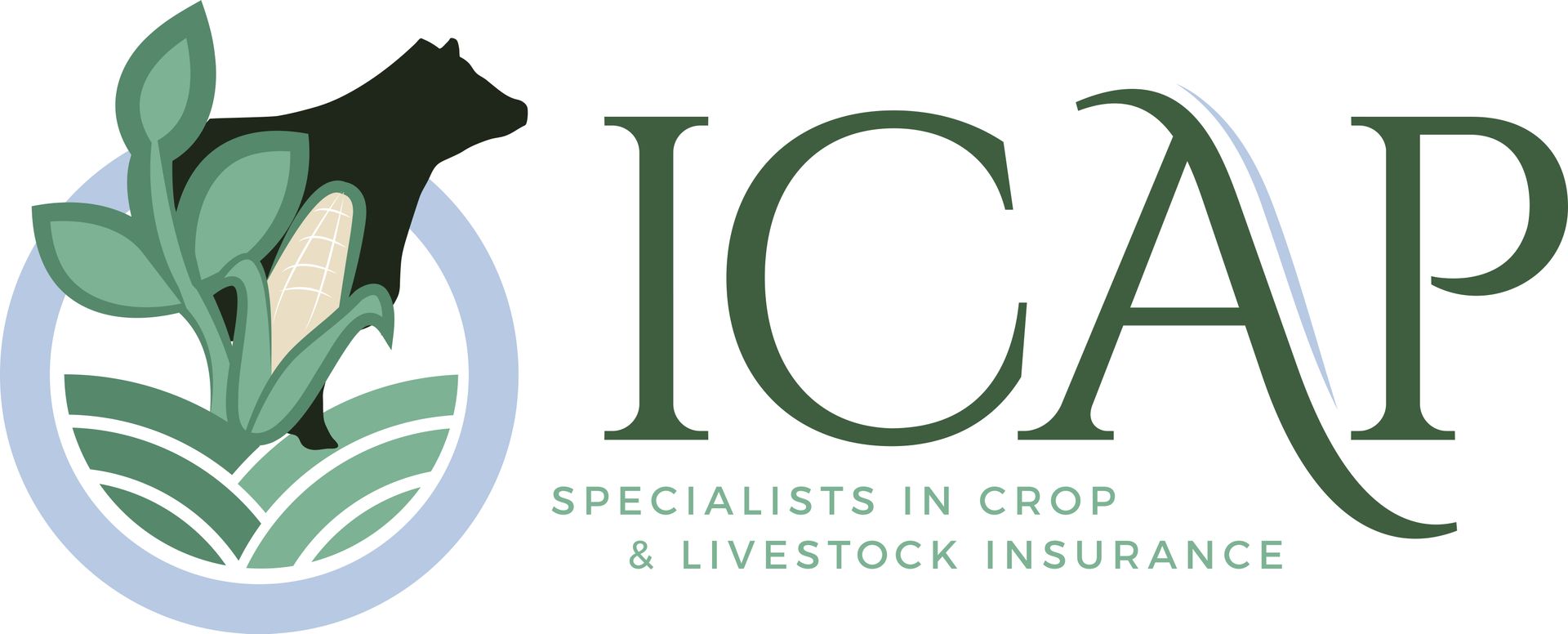products
Overview
Questions? We’re here to help.
-
Livestock Mortality
Animals are a valuable part of your operation. Let us help you protect your assets and investment. An Animal Mortality policy provides you with coverage for all risks of full mortality to working dogs, alpacas, sheep, cattle, and bucking bulls, among others. We can also insure exotic animals.
Coverages For:
- Alpacas & Llamas
- Bison
- Breeding Sheep, Goats, and Swine
- Bucking Bulls
- Confinement, Feedlot, and Pasture
- Exotics
- Frozen Semen or Embryos in Storage or Transit
- Horses
- Show Animals (Cattle, Pigs, Goats, etc.)
- Working Dogs
- And More
-
Transportation
Transportation plays a vital role in the agriculture industry. It also faces unique risk exposures. We connect you to transportation coverage solutions that help manage and mitigate your specific risk factors, which means improved safety and more peace of mind for everyone.
Coverages For:
- Small Fleets
- Large Fleets
- Long Haul Trucking
- Short Haul Trucking
- Motor Truck Cargo
- Livestock Motor Truck Cargo
- Non-ag Transportation
- Pollution Coverage (hazardous material such as milk and chems & fertilizers)
- And More
-
Pasture, Rangeland, and Forage (PRF)
PRF is an FCIC-reinsured risk management tool offered by ARMtech for farmers and ranchers who rely on pasture, rangeland, or forage for haying and/or grazing.
It includes coverage for a significant reduction in rainfall amount in a given geographic area (or grid) containing the insured indemnities rather than individual farms or ranches.
This policy allows you to buy insurance protection for losses of forage produced for grazing or harvested for hay, resulting in increased feed costs, destocking, depopulating, or other actions.
PRF indemnifies the insured if a grid’s accumulated rainfall index is below the insured’s “trigger grid index” for the period of insurance. The PRF policy uses the data from each grid to determine indemnities rather than individual farms or ranches.
PRF isn’t based on individual farms, ranches, or specific weather stations in the general area. Both grazing land and hay land utilized for forage production may be insured. This coverage is offered for landlords, tenants, and owner/operator property.
-
Livestock Risk Protection
Livestock Risk Protection (LRP) will provide single peril risk protection against decreased prices during the insurance period. It’s a federally-reinsured livestock product that can be purchased throughout the year.
The RMA monitors capacity levels, and as soon as the funding limit has been reached, the sales of the product will stop. LRP does not insure against:
- Death
- Loss
- Poor performance
When the insurance period ends if the ending value is below your coverage price, you’ll be paid an indemnity for the difference.
-
Revenue Protection (RP)
Revenue protection protects against revenue loss caused by price increases or decreases, low yields or a combination of both (for corn silage and rapeseed, protection is only provided for production losses).
This coverage guarantees an amount based on the individual producer’s APH and the greater of the projected price or harvest price. The projected and harvest prices are established according to the crop’s applicable commodity board of trade/exchange as defined in the Commodity Exchange Price Provisions (CEPP).
While the revenue protection guarantee may increase, the premium will not. The projected price calculates the premium and replant payment or prevented planting payment. An indemnity is due when the calculated revenue (production to count x harvest price) is less than the revenue protection guarantee for the crop acreage.
-
Yield Protection (YP)
Yield Protection (YP) protects against yield loss due to unavoidable, naturally occurring events. This includes:
- Weather
- Fire
- Insects
- Plant disease
- Wildlife
- Earthquakes
- Volcanic eruption
- Failure of the irrigation water supply due to a naturally occurring event
Similar to the APH (Actual Production History) insurance plan, YP guarantees a production yield based on the individual producer’s APH. Unlike the APH plan of insurance, a price for YP is established according to the crop’s applicable commodity board of trade/exchange as defined in the Commodity Exchange Price Provisions (CEPP).
The projected price determines the yield protection guarantee, premium, replant payment or prevented planting payment, and value the production to count. The coverage and exclusions of YP are similar to those for the APH plan of insurance.
An indemnity is due when the value of the production to count is less than the yield protection guarantee. The YP plan guarantees a yield based on the individual producer's actual production history. If the production to count exceeds the yield guarantee, the insured will be paid a loss. RMA sets the price on a YP policy.
-
Revenue Protection with Harvest Price Exclusion (RP-HPE)
RP HPE is similar to RP. However, RP HPE coverage protects against revenue loss caused by price decreases, low yields or a combination of both.
Unlike RP, the revenue protection guarantee for RP HPE is based on the projected price only and does not increase based on a harvest price.
-
Area Protection
Area Protection includes:
- AYP (Area Yield Protection)
- ARP (Area Revenue Protection)
- ARP-HPE (Area Revenue Protection with Harvest Price Exclusion)
Area Protection coverage is different from county to county rather than from the individual farms themselves.
Area Yield Protection (AYP)
AYP coverage is based on the experience of the county as a whole rather than individual farms. Maintaining your actual production history is now mandatory and may be used by RMA as a data source to establish and maintain the area programs.
AYP indemnifies the insured in the event the final county yield falls below the insured’s trigger yield.
The Federal Crop Insurance Corporation (FCIC) will issue the final county yield in the calendar year following the crop year insured. Since this plan is based on county yields and not individual yields, the insured may have a low yield on their farm and not receive payment under AYP.
Area Revenue Protection (ARP)
Like the other area plans, ARP is based on the experience of the county rather than individual farms. Coverage is provided against loss of revenue due to a county-level production loss, a price decline, or a combination of both.
Upside harvest price protection is included, which increases the policy protection at the end of the insurance period if the harvest price is greater than the projected price and if there is a production loss.
ARP will pay a loss when the final county revenue is less than the trigger revenue, which is calculated using the higher of the projected price or harvest price.
Area Revenue Protection with Harvest Price Exclusion (ARP-HPE)
ARP-HPE is also based on the experience of the county rather than individual farms. Maintaining the insured’s actual production history is now mandatory and may be used by RMA as a data source to establish and maintain the area programs.
An ARP-HPE policy protects against revenue loss due to a county-level production loss, price decline, or a combination of both.
This plan only uses the projected price and does not provide upside harvest price protection.
An indemnity is due under ARP-HPE when the final county revenues published by FCIC are less than the trigger revenue. Since this plan is based on county revenue and not individual revenue, the insured may have a loss in revenue on their farm and not receive payment under ARP-HPE.
-
Actual Production History (APH)
The APH insurance plan provides protection against a loss in yield due to nearly all natural disasters. For most crops, that includes:
- Drought
- Excess moisture
- Cold and frost
- Wind
- Floods
- Unavoidable damage from insects and disease
The APH insurance plan guarantees a yield based on the individual producer’s actual production history. Unlike YP, the available price elections are established by the Risk Management Agency.
An indemnity is due when the value of the production to count is less than the liability. Of the small grain crops, only oats, rye, flax, and buckwheat remain covered under the APH insurance plan for the current crop year.
-
Enhanced Coverage Option
This coverage, ECO, is a new crop insurance option that allows you to cover an additional area for a portion of the underlying crop insurance policy deductible.
This coverage must be purchased as support to at least one of the following:
- Yield Protection
- Revenue Protection
- Revenue Protection with the Harvest Price Exclusion
- Actual Production History
- Yield-Based Dollar Amount of Insurance policy
Enhanced Coverage Option offers you the choice of 90% or 95% trigger levels. A trigger level is the percentage of yield or revenue where your loss becomes payable.
-
Supplemental Coverage Option
The SCO, Supplemental Coverage Option, was introduced in the 2014 Farm Bill and went into effect in 2015.
It’s designed to protect against widespread loss of yield or revenue in a county by covering a portion of the deductible of the underlying crop insurance policies.
If the county yield falls below 86% then an indemnity is due. This depends on the base policy. SCO will apply until the county yield falls below the coverage level of the underlying policy.
The underlying policies are:
- YP
- RP
- RP-HP
-
Private Products
There are two private products and these are:
- Crop Hail Insurance
- BAND Coverage
Crop Hail Insurance
CH (Crop Hail) insurance provides protection against any unavoidable loss of crop caused by:
- Hail
- Fire
- Lightning
Crop Hail insurance also covers crops during their transport to their first place of storage. It protects them against:
- Collision
- Overturn
- Collapsed bridges, docks and culverts
Crop Hail insurance plans are written on a dollar-per-acre basis. The amount of insurance is set by the policyholder.
BAND Coverage
BAND Coverage allows you to create your own crop insurance product. It allows you to build and create coverage that suits you and your crops.
BAND Coverage is a risk management tool that protects against shallow losses and provides reliable cost recovery.
-
Dairy Revenue Protection
DRP (Daily Revenue Protection) is an insurance plan specifically designed to let dairy farmers purchase risk management protection against potential declines in quarterly revenue from milk sales. This revenue decline can result from a decline in milk prices, production, or both.
This insurance plan is approved by the Federal Crop Insurance Corporation. Coverage for this protection is based on quarterly revenue. Revenue is determined by a producer selecting to base their coverage on a mix of Class III and Class IV milk prices or components.
The expected revenue is based on the future prices for these selected milk and dairy products. The dairy producer determines the amount of covered milk production, and the covered milk production is indexed to the state or region where the producer is situated.
The coverage is determined by:
- The value of the milk
- How much milk is produced
- The coverage level
- The protection factor
- Purchased quarterly contracts


